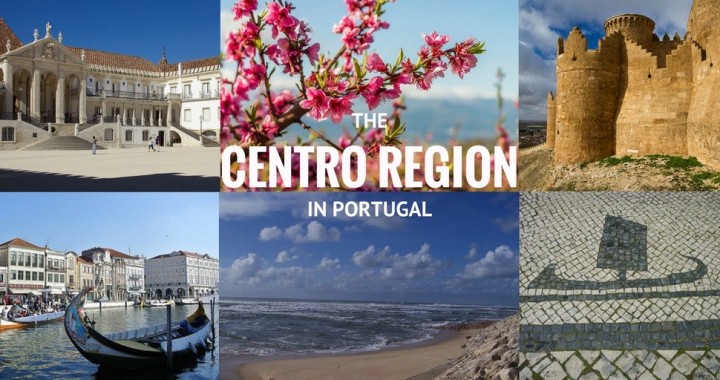Nestled in between the cities of Lisbon and Porto and with the Atlantic coast to the West and Spain to the East, the Centro region has everything you need for a perfect midweek break. Here at Totally Spain, we’ve been devising itineraries for Spain & Portugal for over 16 years and we know it won’t be long before the international crowds arrive to explore Coimbra, Aveiro & Belmonte. See it now, we say, while it’s still relatively unknown outside of Portugal.
WHY WE LOVE PORTUGAL
If you’ve read our guide on Lisbon city, the Lisbon region or on Portugal, you already know that we plan many trips in this great country. It’s a place that we go back to time and time again and love introducing our clients to. Here are just some of the highlights of the Centro Region of Portugal:-
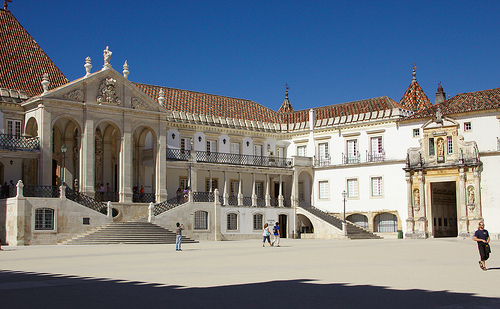
Coimbra city – beloved for its UNESCO-listed university and its music. photo credit: Debarshi Ray Courtyard of the University of Coimbra via photopin (license)
1 COIMBRA
The Guardian Newspaper is a big fan of Coimbra’s “fairytale history” and so are we. Best known for its university and Romanesque cathedral consecrated in 1184, Coimbra was the first capital of Portugal back in the 12th century. And if you visit the nearby Roman settlement of Conimbriga you see just how far back it dates. The city became a World Heritage Site in 2013 and has long been an obligatory stopping point between Lisbon and Oporto.
We love its charming cafes and pastry shops that tempt you in, as you walk up the cobblestoned hill overlooking the city. As the road snakes around on its way up to the university, you’ll pass student halls of residence and quite a few student bars to remind you that this is a living university city! Although this is Europe’s oldest university, having been established in 1290, it is alive and well today as you’ll see by the student population (which hovers around the 20,000 mark) with many wearing the traditional black student cape with colours distinguishing the line of studies they are taking. You’ll come across a great many faculty buildings but our favourite place to visit is the wonderful baroque wooden panelled library called Biblioteca Joanina that gives a great sense of the status and history of the college. Did you know the basement housed a student jail? Of course the former palace is a must-see. The university degrees are now handed out in what was the royal bedroom! And a visit to the Museo Academico is also worthwhile.
The Telegraph recommends a visit to the “city with a glorious past, a poetic soul and a unique sound”. And that sound refers to the tradition of fado here in Coimbra. Fado is sung exclusively by men in Coimbra – and because of the city’s connection with the university, you see them in their traditional academic capes often performing on the street – which is called a serenade. You can also visit the Fado Centre for a performance which will give you a great insight into the music. We like how the session is concluded with a glass of port which is the perfect way to wind down after a great day’s touring.
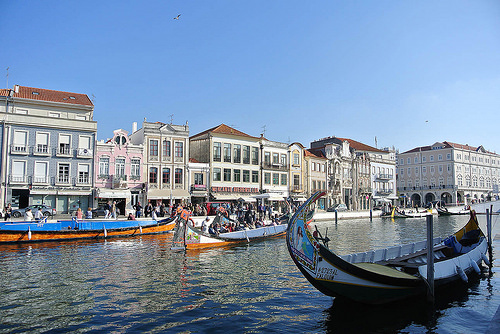
Aveiro is known as Portugal’s Venice and it’s easy to see why! photo credit: javier_hdez Aveiro via photopin (license)
2 AVEIRO
The New York Times describes it as “a surprisingly cosmopolitan fishing town on northern Portugal’s Rota da Luz, the Route of Light, where there is a young and vibrant energy in the streets and on the canals.” And we can’t find fault with that. We were completely dazzled by it when we first came and have been recommending it ever since. As you’d expect from the so-called ‘Venice of Portugal’, this town has a number of canals buzzing with street-side cafes and restaurants and its fair share of giant colourful Portuguese gondolas called moliceiros. You can take a boat trip on the Ria in one of these boats to explore the waterways in depth. But that’s only part of Aveiro’s charm. It’s fishing tradition is very visible from the fishermen’s whitewashed houses to the wonderful Fish Market – which serves fish by day and by night is in the centre of the bar and restaurant area. The new university (1973) with a student population of 12,000 gives the place a modern and upbeat feel. As do spaces such as Mercado Negro – a cultural centre featuring independent stores overlooking one of the canals.
If you like visiting churches you’ll be spoiled for choice. Founded in 1423 and remodelled on a number of occasions, the city’s cathedral offers elements of Baroque and Modernist architecture. There are three other churches you’ll also want to pop into including the Church of Saint Gonzalo – who is revered locally. And Aveiro’s Museum is located in a former Dominican convent – Princess Joana lived here with the order in the 15th century and her tomb is open to the public.
Stop by the small Museum of Art Nouveau if you enjoy this period of architecture – although just walking around, you’ll find quite a few art nouveau gems around the centre. It’s a very compact city and easy to get around – especially by its very popular bike rental scheme. When you’ve tired of the cobbles and the canals (if that is possible), you’ll find a great number of beaches nearby such as Barra beach with huge sand dunes and great views. This is where you’ll see the charming clapboard beach houses that are just begging to be photographed and shared – that’s if you have any battery left in your phone – the whole town with its colourful buildings and cobblestones and lanes and modern sculpture is Instagram gold!
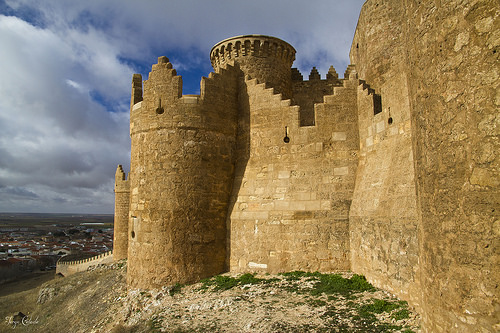
The story of Belmonte is one of tenacity, resolution and perseverance – a real “must-see”! photo credit: jorcolma Vistas desde el Castillo de Belmonte via photopin (license)
3 BELMONTE
It’s surprising how much variety you’ll find in the Centro Region. Coimbra and Aveiro couldn’t be more unalike and Belmonte – again – is a completely different experience. Close to the border with Spain, Belmonte is a very special, albeit tiny, town. Unlike many other sites in Spain or Portugal where you’ll find examples of Jewish history up until the 15th century, here in Belmonte, a Jewish or crypto-Jewish community has been in residence from the 13th century through to today.
Belmonte was home to the largest Jewish community in Portugal up until the late 15th century when most of the community exiled to avoid persecution during the Spanish Inquisition. But it’s those who stayed that make Belmonte so unique. Make a visit to the town’s Jewish Museum that opened in 2005 to gain some insight on the history of the Portuguese Jews, their inclusion into Portuguese medieval society, their public and private habits, the history of persecution and its recent chapter which is still unfolding. The Telegraph singled out this museum, located in a former Roman Catholic schoolhouse, as one of Portugal’s best small museums. You should also visit the restored Jewish quarter where you’ll find a modern synagogue built in 1996 that serves its community of about 300. The community abandoned its secrecy in the early 1990s when it cut its ties with the Roman Catholic church and formally converted. The Guardian calls Belmonte one of Portugal’s “little known gems” and we think that doesn’t go far enough – do not come to this region without planning a visit to Belmonte. When you are here, you’ll know why – it really has a unique atmosphere and energy.
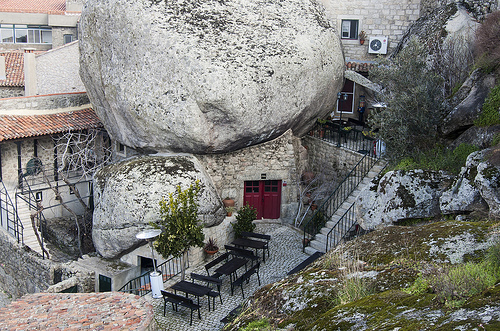
This has not been photoshopped – Monsanto really does look like this! photo credit: Lorenmart Portugal, Monsanto 2011 – Un tejado para la eternidad via photopin (license)
4 HISTORICAL VILLAGES
Belmonte isn’t the only charming destination along the border with Spain. We love Guarda, Almeida, Marialva and Monsanto to name but a few. All of the best villages have joined forces as the Historical Villages Network and you’ll find some really interesting additional destinations if you wish to explore this region’s hidden treasures. If we had to recommend just one – it would be Monsanto – not just for its castle and medieval feel. Have you seen the image above of the houses built in between large boulders. It has to be seen to be believed!
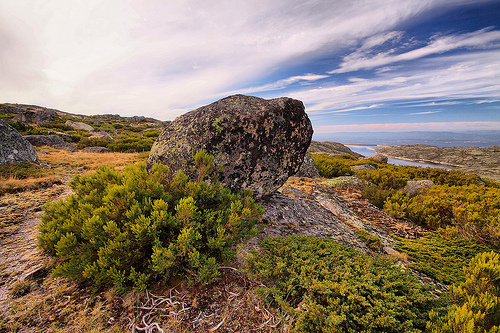
375km of marked trails await you in the Serra da Estrela National Park. photo credit: Fr Antunes Rock via photopin (license)
5 SERRA DA ESTRELA
After all the cobblestones in the villages, you might be yearning for some open spaces. Why not plan a day in the National Park that is home to Portugal’s highest mountain? At 1,993 metres at its highest point in Torre, the Serra da Estrela is an area of rare landscape and beauty. You’ll find over 375km of marked trails which are perfect for hiking in the summer. Why not explore some of the 25 lagoons and three glacier valleys (Zêzere, Loriga and Unhais da Serra) by foot, bike, on horse-back or for the really brave – by handglider. If you’re visiting in winter, you might want to hire some skis, a snowboard or even a snowmobile. If you are looking for picnic hamper ideas, you should include the local sheep’s cheese called queijo da Serra which still comes wrapped in cloth. It’s been granted its PDO status so you know the quality is good! If you’ve tried the Torta del Casar from Extremadura- it’s a little bit like that. If you like the sound of the cheese but not the hike, you might be more interested in visiting one of the local cheese producers or to the Cheese Museum in Pêraboa – Covilhã. And what about adding on a trip to the Bread Museum in Seia?
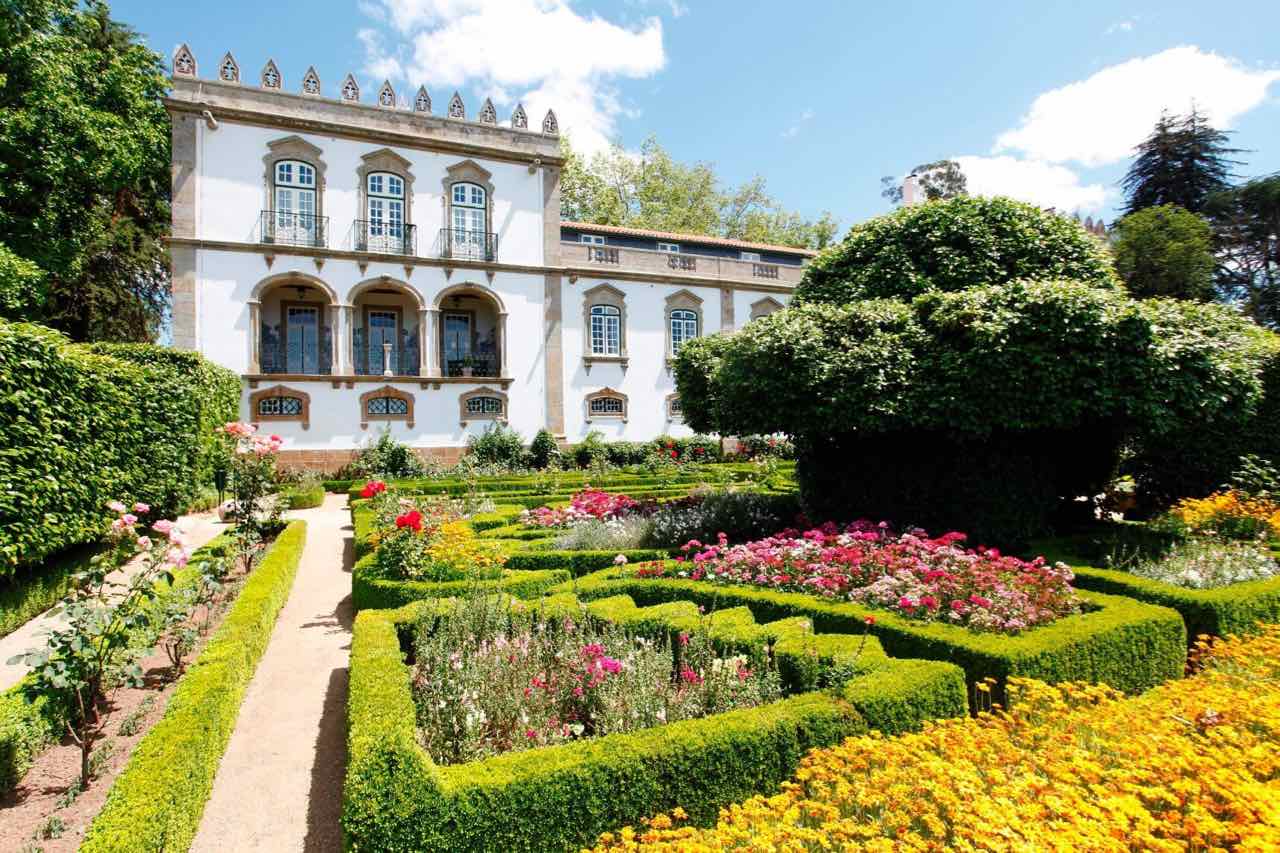
The brand new Parador in Portugal is a fully restored 18th century mansion called Casa da Insua. Pic credit: Parador.es
6 PORTUGAL’S FIRST PARADOR IN VISEU
If you’re charmed by places such as Aveiro and Coimbra but find them a little too “touristy” perhaps you’d prefer to check out the lovely Viseu. The town itself is not in any way touristy which makes it a great place for people-watching from charming cafes. In the locality you’ll find the first parador in Portugal. Located in the former home a Portuguese governor to Brazil, it has been beautifully restored and styled to reflect the Baroque period in which it was built. We’ve written about it in detail here along with a sample itinerary from Madrid to Porto.
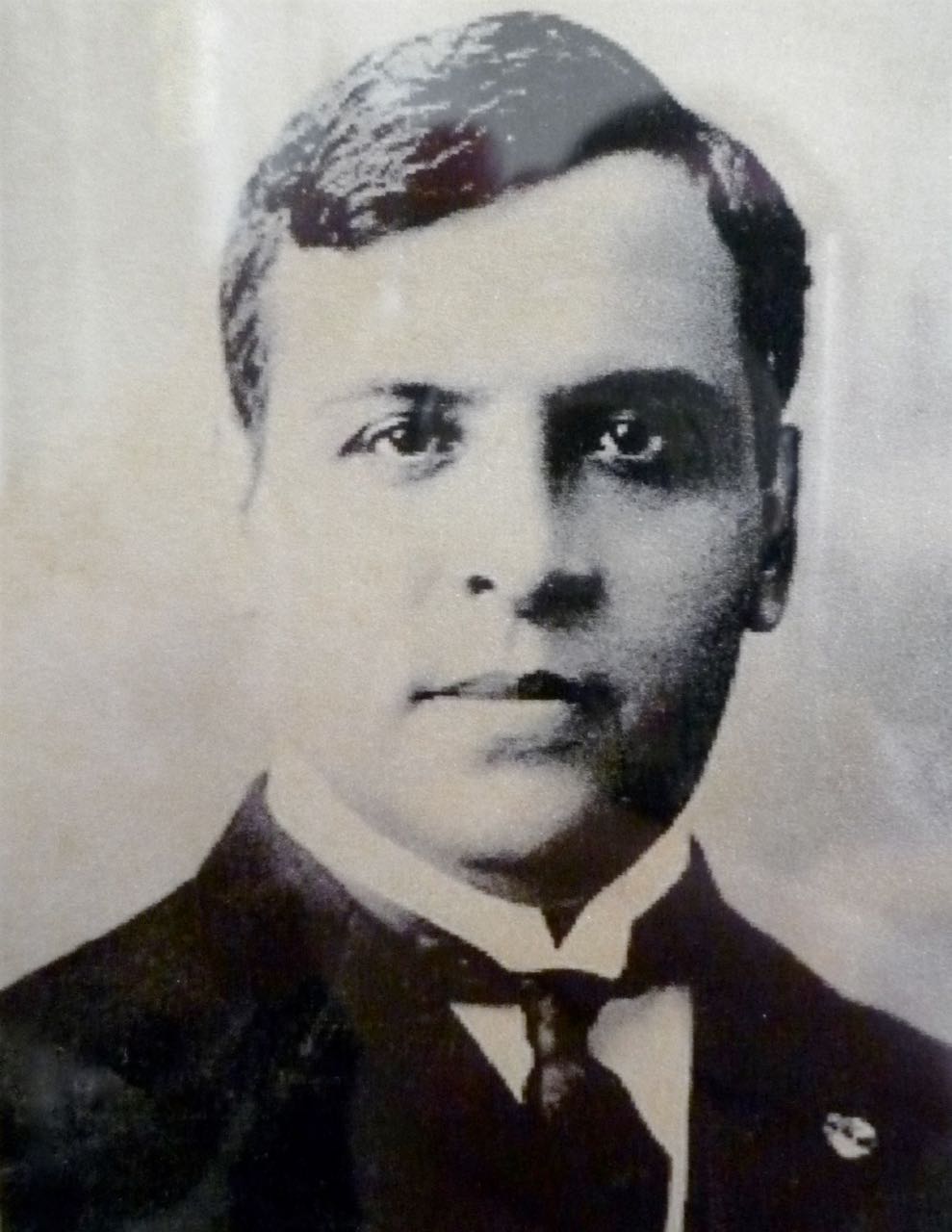
Aristides de Souza Mendes (1885-1954) was a Portuguese diplomat based in Bordeaux, France, who challenged orders and issued 30,000 visas to enter Portugal from all nationalities wishing to escape France in 1940
7 JEWISH HERITAGE
Also in Viseu, you may not have heard about the diplomat named Aristides de Sousa Mendes who is said to have saved tens of thousands of Jews from persecution by allowing them passage from France where he was based into Spain and onto Portugal. You can read more about the man and the house-museum being restored here in his honour in our post on Jewish sights in Portugal. That’s where you’ll also find details on Belmonte and Trancoso which are both part of the Red de Judiarias in Portugal. If you’re thinking about a trip to research your Jewish past, we have years of experience and a great network of expert local guides (plus chefs who can prepare kosher meals and hotels that facilitate individuals and groups observing the Sabbath). Have a look at one such research trip here.
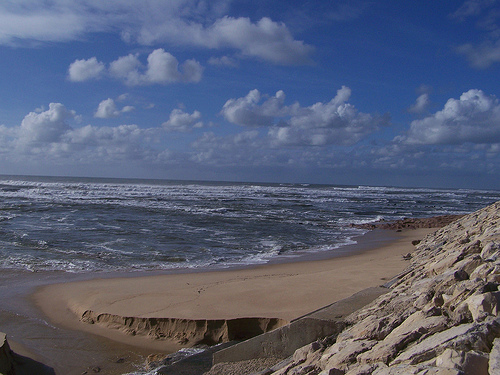
Buarcos photo credit: Cornelius Kibelka The Atlantic at Buarcos via photopin (license)
8 Centro’s Beaches
How could we write about this area without recommending the beautiful beaches? Here in the Centro Region, you can explore Peniche and the many other stunning beaches which, being on the Atlantic, are very popular with surfers. You’ll find plenty of surf schools in the area offering classes and board rentals. If you’d like some dramatic coastline we always enjoy the sandy beaches such as Baleal and if you want a resort, you could try Praia del Rei. If you have to choose just one beach, it would be hard to resist the charming town of Nazare with its pretty old town and funicular to the beach. Figueira da Foz is another great coastline including lovely beaches with a fishing tradition such as Buarcos that offers lots to see and do as well.
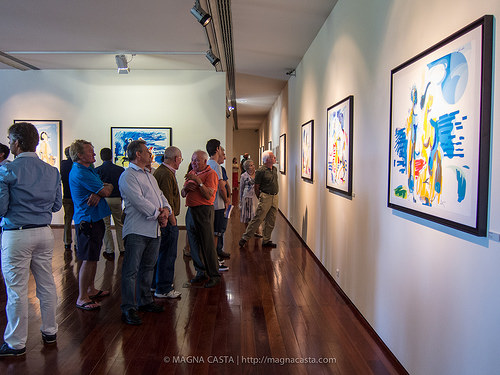
As well as tasting some great wines, you can learn about the culture and history of wine-making locally. photo credit: magnacasta Museu do Vinho da Bairrada via photopin (license)
9 Wine Tourism
Portugal is a major wine producer and in the Centro region you can enjoy some great wines and visit some brilliant wineries. Our tip of the crop is the amazing Allianca winery and underground museum which is well worth a visit. Where else will you find wines and spirits in perfect harmony with eight art collections from locations as diverse as Zimbabwe and Argentina? The tour covers the wine-making process as well as an art collection featuring paintings, tile collections, sculptures and more. You could also take in the Wine Museum in Bairrada which not only has a wine shop and wine tasting room, but a permanent exhibition called Wine Routes and many temporary exhibitions on the theme on wine.
As you explore the region, we encourage you to try to taste as many of the local wines as possible when here. The top three are Bairrada, Dão and Beira. Bairrada is on the coast, whereas Dão is inland on the River Dao actually; and Beira’s vines are grow high up in the mountains so you have three completely different soil types producing very different wines. We should probably mention the local gastronomy is perfectly matched with the local grapes. Make sure to try the goat, the cheeses and the suckling pig.
10 Rock Art
Nearby where the Douro River flows through the Centro region, we recommend the UNESCO Heritage site that is the Parque Arqueologico del Valle del Coa. It’s famous in Portugal for the open-air carved animals on the rocks but very rarely registers any interest from abroad. You can visit three clusters of the carvings – by day or by night! We recommend trying it on a night when the moon is full. Actually, if you are into rock carvings, you could also visit the extension of the Coa Valley Park at Siega Verde, near Ciudad Rodrigo which is across the border in Spain.
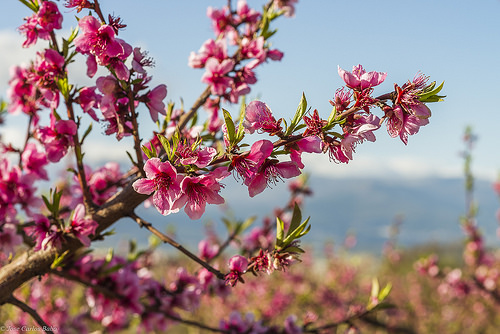
Is there anything prettier than cherry blossom? You’ll find lots in the Centro Region especially in Fundao and here near Castelo Novo. photo credit: Jose Carlos Babo Spring Flower via photopin (license)
11 Cherry Blossom
You may be very familiar with the cherry blossom in Extremadura but did you know that the Centro region in Portugal is also a great place to catch the bloom in Spring? The Beira Baixa Cherry is infamous in Portugal and we can’t recommend it enough. You can hike a 10km circular hiking route or simply attend the many cherry fairs and festivals in May & June in the area. Check out Fundão, Covilhã and Belmonte or see here for more details.
12 Schist Villages
Schist is a coarse-grained metamorphic rock that consists of layers of different minerals and can be split into thin irregular plates. In the Centro region you’ll find 27 “schist villages” that use this stone in the construction of their houses and at these locations, near the Serra da Estrela, you can experience the skills and the tradition for yourself. If you’d like to get a sense of one right now, see this video of the village of Talasnal taken from the air – absolutely fascinating!
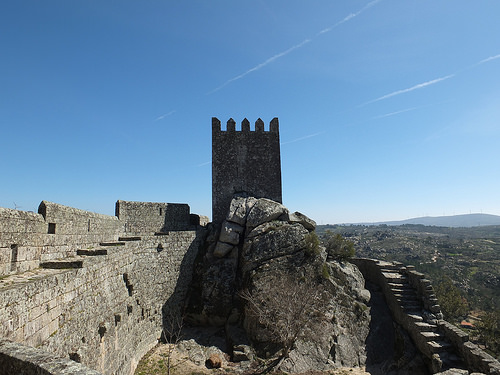
Although some might say it’s in ruins, we are in awe of Sortelha’s magnificent castle with gates, a keep and a tower – plus those amazing steps!
photo credit: albTotxo Castillo – Torre vista desde el extremo opuesto via photopin (license)
13 Frontier Castles
And finally, who doesn’t love a great castle? As you’d expect in this frontier territory between Spain and Portugal, there’s lots of townlands with the name Castelo in their name. And many of these still have a castle to explore. Castelo Branco which was given the title of “Eminent Town’ way back in 1535 is one of those – you can still visit the Knight’s Templar castle built between 1214 and 1230. Continue on to the Templar castle at Penamacor, then go to Sortelha, Sabugal and Almeida. It’s possible to see all five in one day (if you really do like your castles) as the full route takes just 2h30 to drive. You will be driving parallel to the Spanish border as each of these castles are about 20km from the Spanish border. If you haven’t programmed in Belmonte already – you’d like the castle there which is pictured above. And Castelo Rodrigo – although the castle is in ruins, you can still learn much. If you are interested in the Knight Templar history in Portugal, you should really check out the UNESCO-listed Convent of Christ (at Tomar) and Alcobaca and Batalha in the neighbouring Lisbon region of Portugal.
